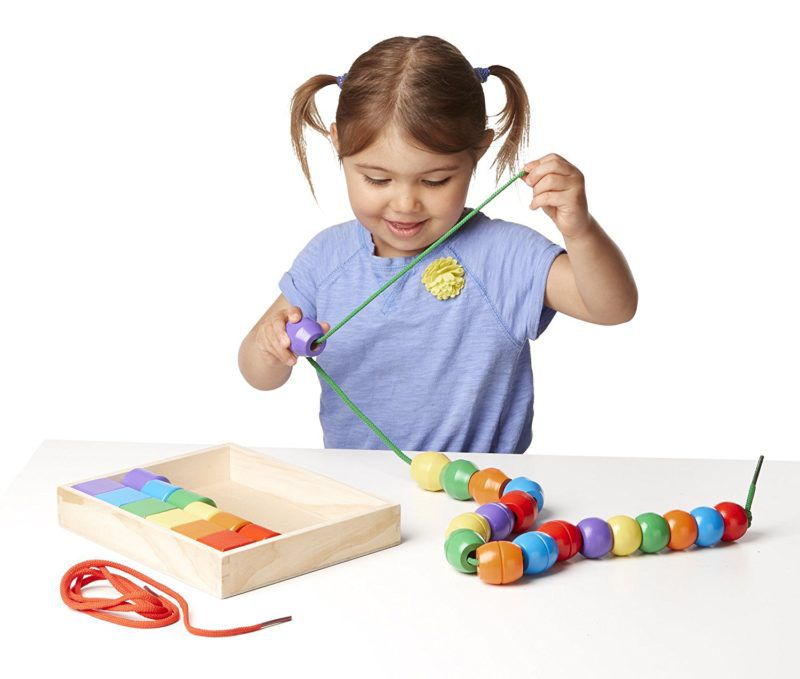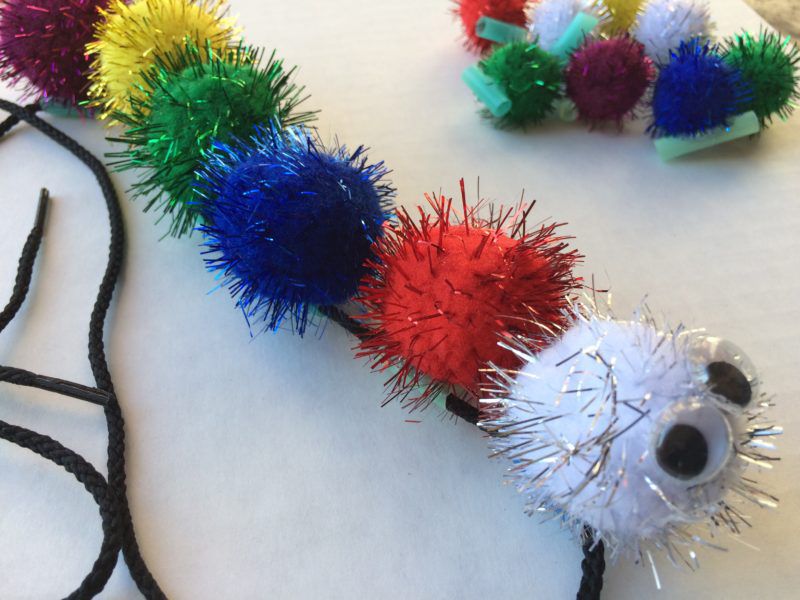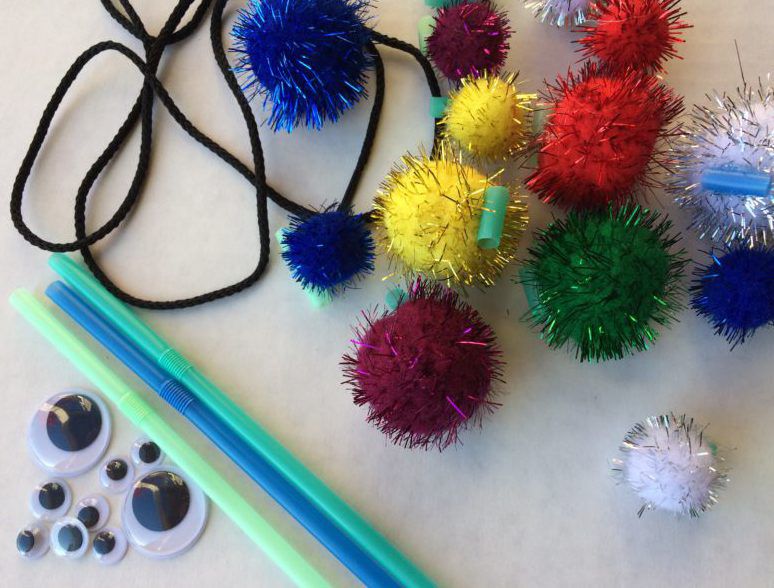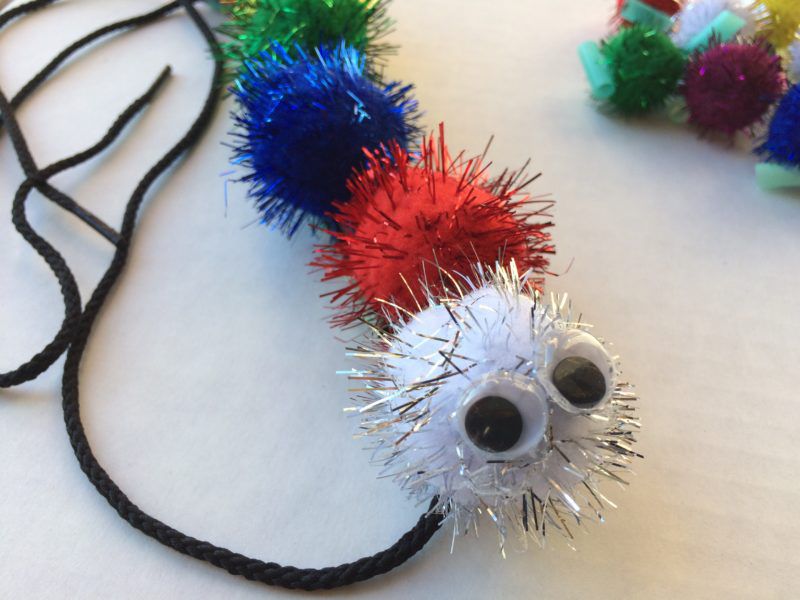The Counting Caterpillar is one of those projects that evolved into its own learning experience. Originally, I was just looking for a “classic” children’s toy to add to the Grandpa Goff Bug Club collection. I was looking for something like this*:

If money were no object, and space in my grandchildrens’ toy closets were unlimited, this item would still have made a good choice. However, I’d already decided to ship a caterpillar and butterfly habitat to the girls this month, and I can practice some fiscal restraint. So I had to invent another bead-stringing project with supplies I had around the house. That is how this counting caterpillar game came to exist.
The closest thing I could imagine that bore any resemblance to a real caterpillar was a bag of fuzzy pom poms I had on hand:
Supplies I used for this Counting Caterpillar included:
- Large pom poms
- Plastic straws
- A shoe string (you could use heavy yarn as well)
- Plastic wiggly eyes
- Glue gun
We started by clipping the straws into small 1/2-inch sections, then I hot-glued a piece of straw to each pom pom.

That’s about it for this creation. I tied a knot in the end of a shoestring and my makeshift “bead stringing” activity was ready–almost.
I added wiggly eyes to one of the pom poms in the collection because, well, even a caterpillar has a front and a behind, and he just needed eyes.
Your child can thread each pom pom onto the shoestring to create his own crazy caterpillar.
Counting Caterpillar – Early Math Skills
Now for the counting part of the activity: It may not surprise you to know that you are your child’s first math teacher. You’ve probably already started on the process without even realizing it. If you ever count steps as you are going up and down, or count buttons out loud as you button up a child’s shirt, you are teaching simple math skills.
That process comes so naturally to most parents that we don’t even know where we learned that we should do it. But if you think about it, the reason you typically count things with your child is expressly because you want them to learn how to count–first to three, then to five, and finally to ten and beyond.
Watching the Brain Learn
Watching how each individual child’s brain learns is one of the most fascinating aspects of parenting. It’s fun to watch as the concept of counting begins to make sense to a child. Eventually, you’ll discover eleventy-seven new ways to teach your child beginning math skills. But for today, here are 3 simple math games you can play with your counting caterpillar:
- Count the number of pom poms as you add them to your string caterpillar. As you count over and over, your child will learn that there is a specific sequence involved in counting.
- If you have enough pom poms, you could introduce the idea of patterns. Add a red pom pom then a green one, then a red one, then a green one.
- You can let your child sort the pom poms into similar color groups before you start. Put all of the purple pom poms in one pile and all of the yellow ones in another pile until all of the colors are sorted. There may be more pom poms in one pile and fewer pom poms in others.
The colored pom poms you use for your Counting Caterpillar will help you introduce or reinforce simple mathematical concepts like counting, sorting, and patterns.
Early Math Skills Are All About PLAY!
You can learn more about early counting skills here. I’m a huge advocate of using play opportunities to allow children to learn. On the other hand, I’m strongly opposed to turning a play experience into a frustrating experience for a child because a parent is so focused on an outcome that he or she undermines the whole learning process by “forcing” the parent’s version of learning.
Your child’s brain at play is learning critical concepts that you don’t even know are being absorbed. Just help create the play opportunity and let the learning happen naturally. Happy counting!
*Affiliate Link






